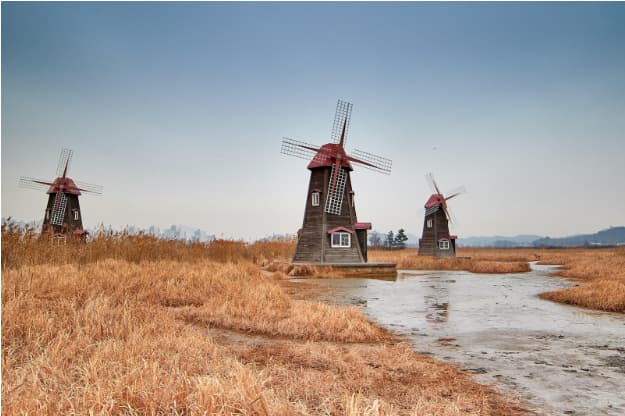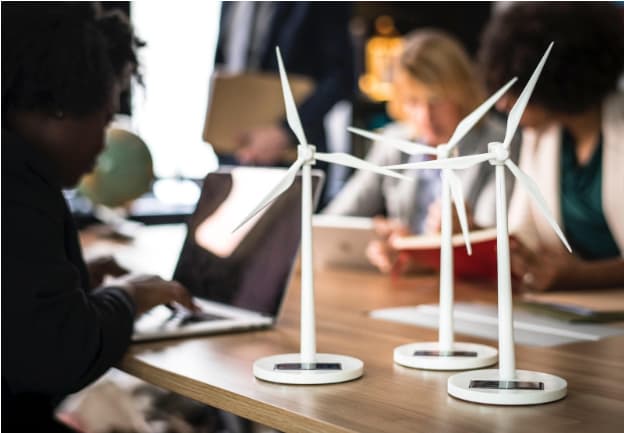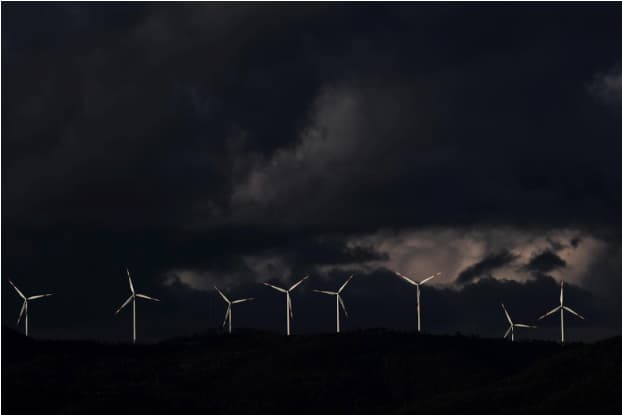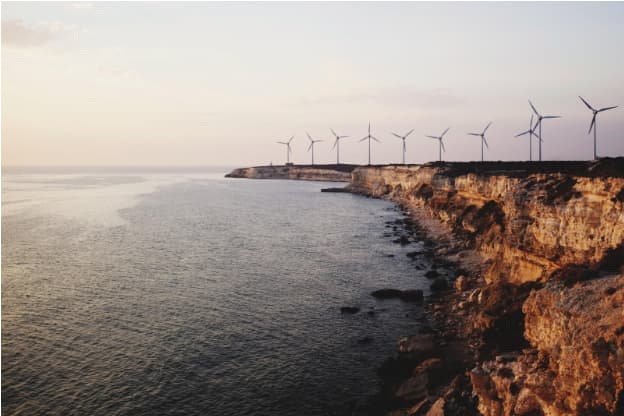& Construction

Integrated BIM tools, including Revit, AutoCAD, and Civil 3D
& Manufacturing

Professional CAD/CAM tools built on Inventor and AutoCAD
4 min read
There’s a Chinese proverb that suggests when the wind blows, some build walls, while others build windmills. Throughout history, we’ve long been fascinated with what exactly to do with the wind, and, even today, the discussion of wind energy can create controversy. For some, a wall and a windmill are the same thing—a potential waste of time and money.
But for many, the promise of harnessing the wind via windmills represents a past and future of sustainability.
A Historical Overview

Heron of Alexandria first designed a windmill in Roman Egypt in the first century, the earliest known instance of wind intentionally creating power. In India, Tibet, and China, they had the prayer wheel, which spun because of wind. In 5000 B.C., the wind drove boats down the Nile River. Windmills pumped water in China in 200 B.C., and ground grain in Persia and the Middle East. By the 11th century, Middle Easterners relied on the windmill for food production, which inspired crusaders who borrowed the idea back home. The Dutch, who are largely associated with the windmill, elevated the design so that it was able to drain lakes and marshes.
In 1850, the U.S. Wind Engine Company was established, which was meant to provide wind power for the American West. by 1893, wind power was featured at the Chicago World’s Fair, where 15 companies showcased new designs.
By the 19th century, the windmill was established in the New World, where it pumped water, ground grain, and generated electricity. During World War II, a 1.25-megawatt wind turbine sat on a hilltop in Vermont and sent energy to a local network, and, when oil shortages began to occur 30 years later, people got serious about the wind.
From the mid-70s through the mid-80s, the United States government worked to develop commercial operations for wind energy. Dollars were put into development, and 13 experimental turbines began operating using four different designs, some of which are still in use today. Under this program, which was overseen by the National Aeronautics and Space Administration, windmills set world records for power output.
In 1978, Congress passed the Public Utility Regulatory Policies Act of 1978, which forced companies to purchase a specific amount of electricity from sources that were renewable, and by 1980, large-scale wind farms populated California.
When oil prices dropped, some feared that wind energy would no longer be economical, though California continued to encourage wind power via state and federal tax incentives. In the 80s, the incentives stopped, and solar power halted in the United States, while it grew in Europe following studies that warned about climate change.
What’s Happening With Wind Energy Now?

In 1993, the National Wind Technology Center was built to help keep energy costs down and make wind energy competitive with other sources, and by 2012, the United States was producing enough wind energy to power 15 million homes. In 2013, the Department of Energy and the University of Maine unveiled a grid-connected offshore wind turbine designed to provide a pathway for American leadership in clean energy.
By 2050, the Department of Energy says that it will be possible to supply 35% of energy via wind, and in 2016, Wind Turbine Service Technician was named by the Bureau of Labor Statistics as the fastest growing job of the decade—not surprising considering the introduction of the first commercial offshore wind farm off Rhode Island’s coast. This year, the United States is producing enough wind energy to power over 20 million homes.
Why Not Wind?

While many like the idea of wind-generated electricity, there are a variety of arguments against it, among them a few lies, a few half truths, and a few legitimate concerns. Some argue that the undeniably higher primary cost and then ancillary costs of wind electricity outweigh any benefit. Others believe that the interruption in the landscape isn’t worth it (while others like the look of a field of windmills), and some fear a possible destabilization of the power grid.
As wind energy continues to progress, engineers will be responsible for developing smart, functioning systems that improve upon a technology that was first utilized in ancient times, decreasing cost and time to production—and even addressing the aesthetic concerns held by some.
All Those in Favor

There are plenty of folks in favor of expanded efforts to generate wind energy, including a reduction in the balance of trade deficits in countries that import energy. Wind energy can also help alleviate energy scarcity in nations of all sizes and income levels—and reduce the use and purchase of fossil fuels.
When a country can produce energy within, there is usually an economic benefit, and energy security is created. Wind energy also reduces carbon dioxide emissions and is fairly scalable, meaning that a poor village could host wind energy, while they may not be able to sustain a nuclear plant.
Wind energy and other renewable sources of power are constantly improving and evolving, and engineers need to stay on the cutting edge of technology to develop prototypes that can best harness them. Download EAGLE today and stay on top of the ever-changing industry.
By clicking subscribe, I agree to receive the Fusion newsletter and acknowledge the Autodesk Privacy Statement.
Success!
May we collect and use your data?
Learn more about the Third Party Services we use and our Privacy Statement.May we collect and use your data to tailor your experience?
Explore the benefits of a customized experience by managing your privacy settings for this site or visit our Privacy Statement to learn more about your options.